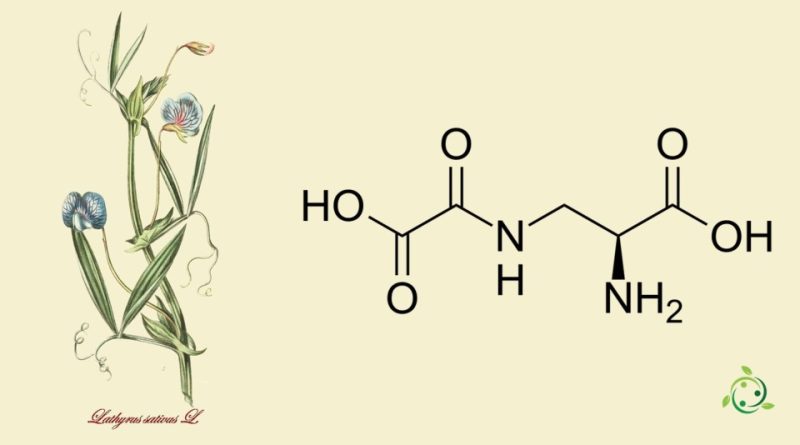Oxalyldiaminopropionic acid
Oxalyldiaminopropionic acid
Oxalyldiaminopropionic acid, whose term in the official IUPAC nomenclature is: 2S-amino-3-(oxalylamine)propanoic acid is an organic acid with the brute or molecular formula: C5H8N2O5.
Oxalyldiaminopropionic acid (ODAP) is the structural analogue of the neurotransmitter glutamate and is a neurotoxin present in the legumes of the Cicerchia plant (Lathyrus sativus L., 1753) responsible for latyrism.
Neurolathyrism in humans is a degenerative motor neuron disease characterized by the degeneration of pyramidal tract neurons in the spinal cord and in the area of the cortex that controls the legs, resulting in paralysis of the lower body.
Latyrism is due to the inhibition by ODAP of lysyl oxidase, the enzyme responsible for the formation of cross-links within collagen. The cicerchia, therefore, is edible only after abundant soaking, taking care to change the water often; in this way, therefore, the ODAP is dissolved in the water used and it is possible to remove it.
Oxalyldiaminopropionic acid is found in Cicerchia seeds in the range of 0.5% w/w. L. sativus can be found in areas of southern, central and eastern Europe, the Mediterranean basin, Iraq and Afghanistan, as well as areas of Asia and Africa.
In some regions, including the Indian subcontinent, Bangladesh, Ethiopia and Nepal, cicerchia has become a staple food. The plant has a high tolerance to environmental conditions making it the only food source available in times of famine or drought. Following these months of drought, epidemics of neurolathyrism may occur.
Warning: The information provided is not medical advice and may not be accurate. The contents are for illustrative purposes only and do not replace medical advice.

